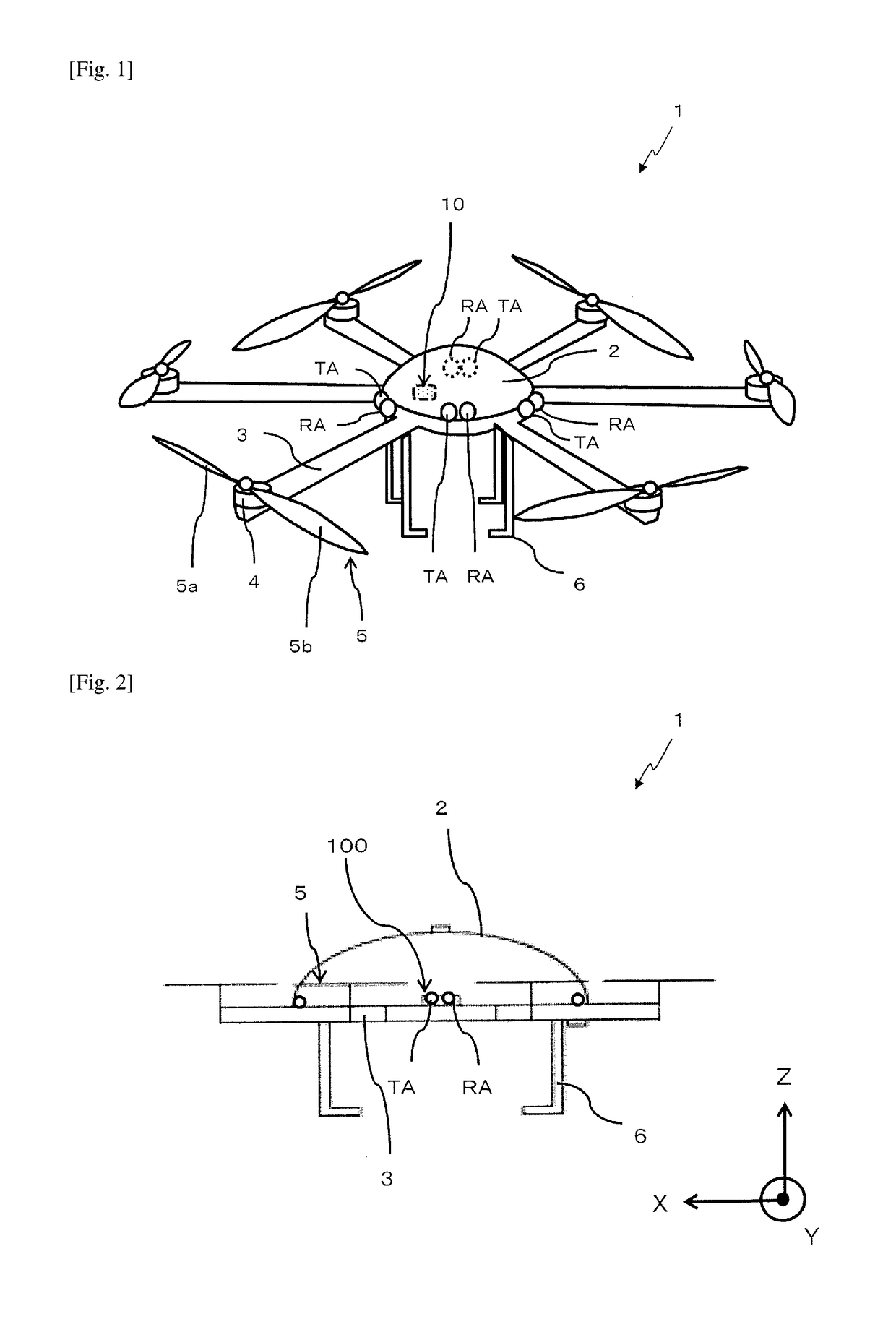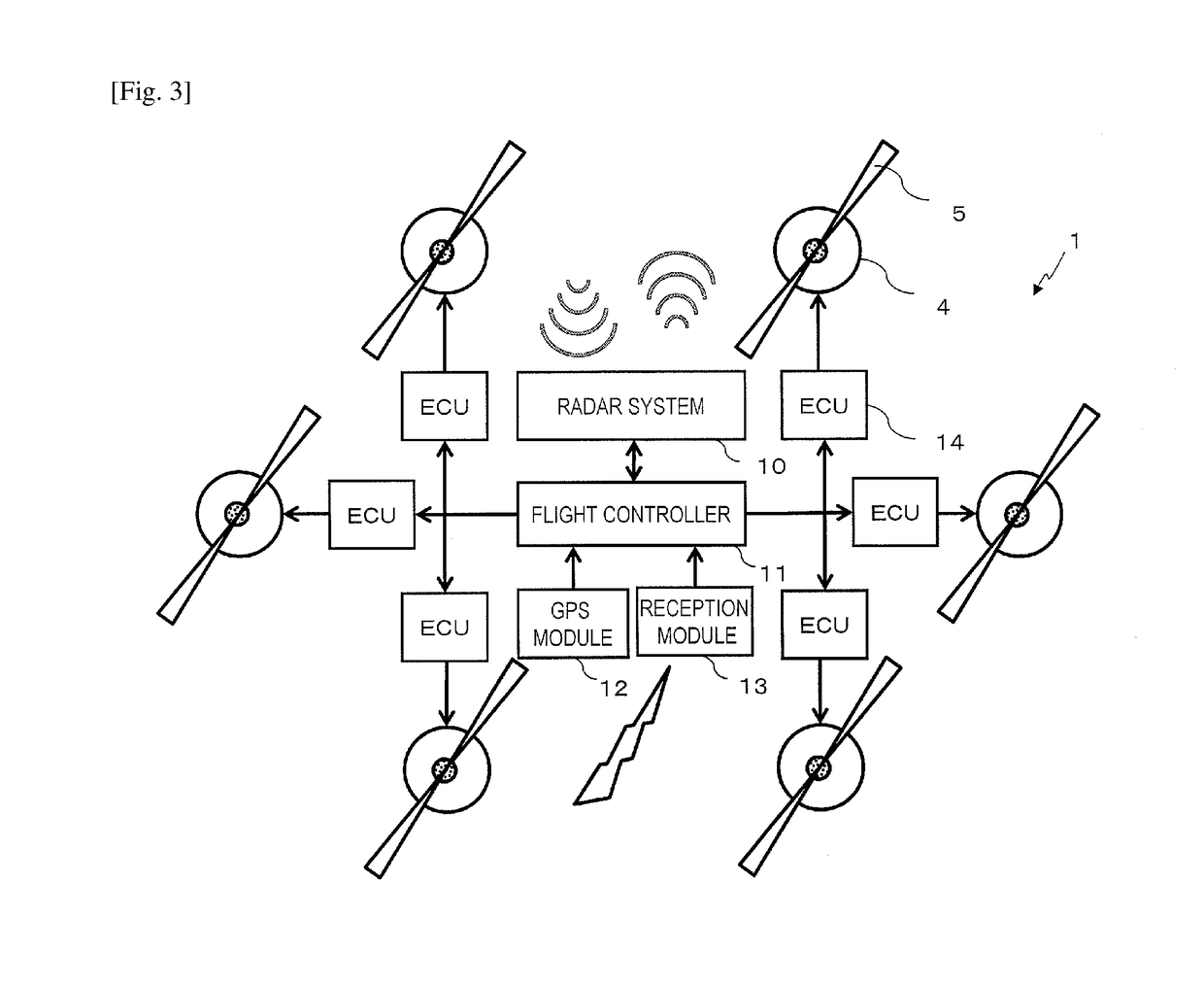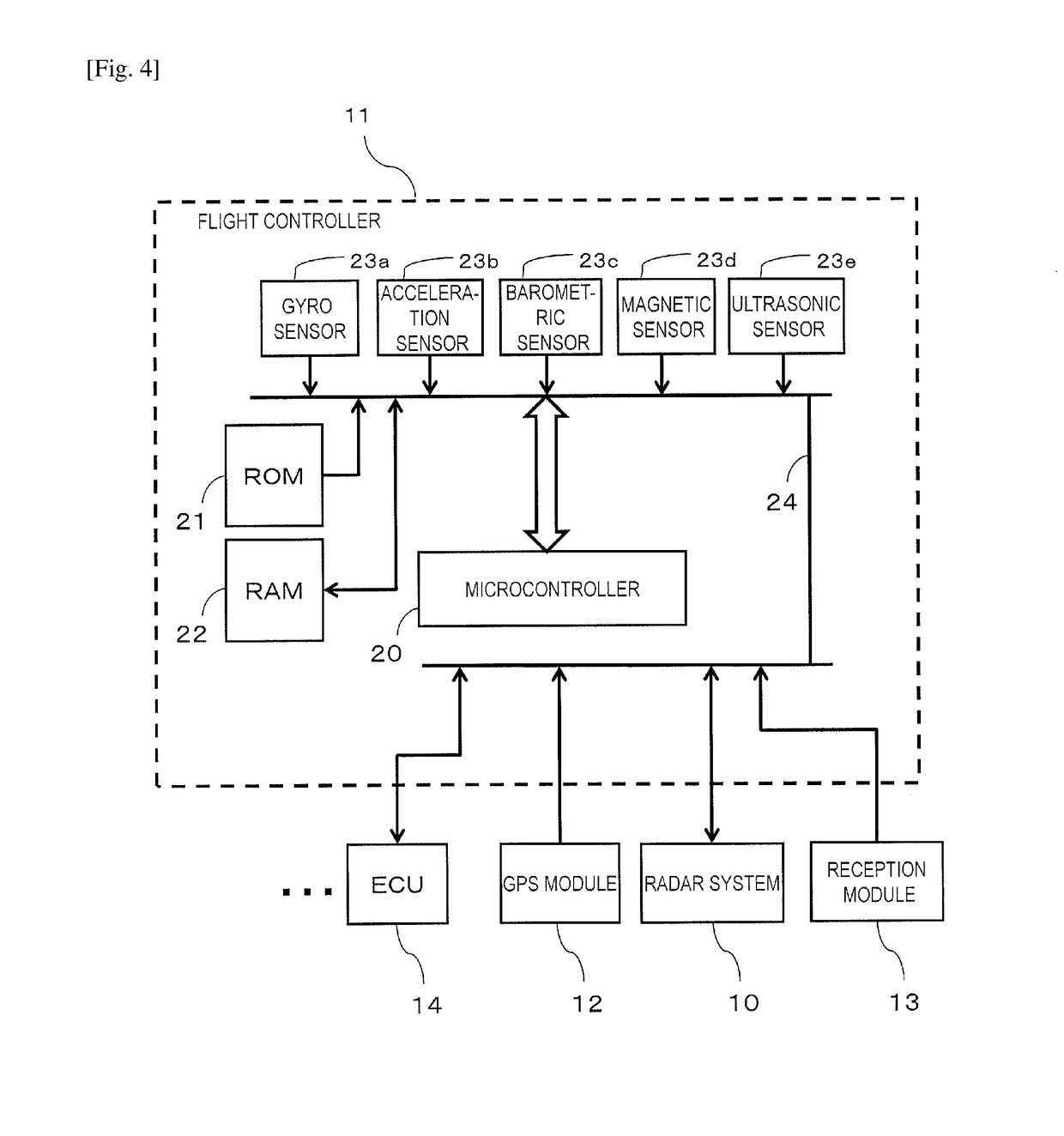Multicopter with radar system
- Summary
- Abstract
- Description
- Claims
- Application Information
AI Technical Summary
Benefits of technology
Problems solved by technology
Method used
Image
Examples
embodiment 1
[0161]In the present embodiment, the radar system 10 performs a target detecting process at moments when the influence of a reflected wave originating from a rotor 5 is small.
[0162]FIG. 21 is a frequency spectrum chart showing a relationship between beat signals respectively corresponding to a reflected wave from the rotor 5 and reflected waves from targets, in a radar system 10 which operates by the FMCW method. In actuality, the frequency spectrum to be obtained will be a total of all waveforms in FIG. 21.
[0163]A reflected wave Rw from the rotor 5 (a “reflected wave originating from a rotor(s) 5”) has a very broad frequency spectrum because, as has been described with reference to FIG. 19 and FIG. 20, the peripheral velocity of the rotor 5 significantly varies with distance from the axis of rotation. In other words, the relative velocity between the antenna TA / RA and each minuscule point on the rotor 5 will have a very wide distribution. On the other hand, reflected waves (target-...
embodiment 2
[0174]The present embodiment will illustrate a process in which the object detection apparatus 40 transmits a signal wave at a moment when the angle or solid angle as any rotor 5 is viewed from the antenna TA / RA is equal to or smaller than the predetermined value. Based on a signal wave which is received by the reception antenna RA, the object detection apparatus 40 estimates a moment at which the angle or solid angle is equal to or smaller than the predetermined value, and causes a signal wave to be transmitted from the transmission antenna TA based on the estimation result. Even if the transmission antenna TA and the reception antenna RA are composed of separate antenna elements, the present embodiment will regard both as being at substantially the same position.
[0175]Note that the reception antenna RA in the present embodiment is composed of a one-dimensional array as shown in FIG. 6, and is able to detect an incident azimuth of a reflected wave. However, in order to detect a mom...
embodiment 3
[0224]In the present embodiment, the radar system 10 separates a reflected wave originating from a rotor 5 from a target-originated reflected wave, and by utilizing the target-originated reflected wave, performs signal processing for detecting a target. The present embodiment will mainly illustrate a process of separating between a reflected wave originating from a rotor 5 and a target-originated reflected wave. Once the target-originated reflected wave has been separated, the subsequent signal processing for target detection is as has been described above.
[0225]The (sweep) condition for a single frequency modulation of a frequency modulated continuous wave FMCW according to Embodiment 2, i.e., the amount of time required for modulation (sweep time), is 1 millisecond, with a modulation width of 250 MHz. However, the sweep time might be made as short as about 100 microseconds.
[0226]However, in order to realize the aforementioned sweep condition, not only the constituent elements rela...
PUM
 Login to View More
Login to View More Abstract
Description
Claims
Application Information
 Login to View More
Login to View More - R&D
- Intellectual Property
- Life Sciences
- Materials
- Tech Scout
- Unparalleled Data Quality
- Higher Quality Content
- 60% Fewer Hallucinations
Browse by: Latest US Patents, China's latest patents, Technical Efficacy Thesaurus, Application Domain, Technology Topic, Popular Technical Reports.
© 2025 PatSnap. All rights reserved.Legal|Privacy policy|Modern Slavery Act Transparency Statement|Sitemap|About US| Contact US: help@patsnap.com



